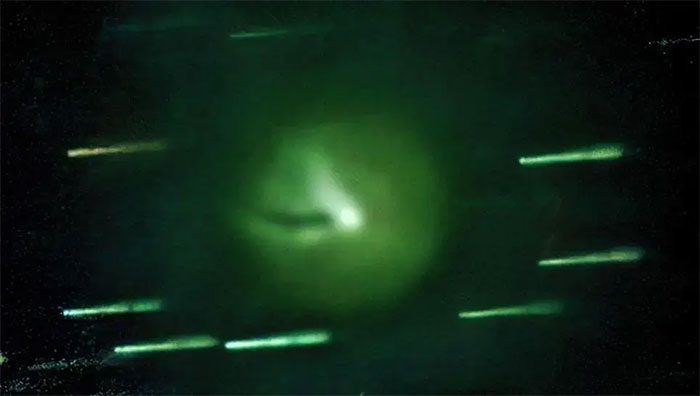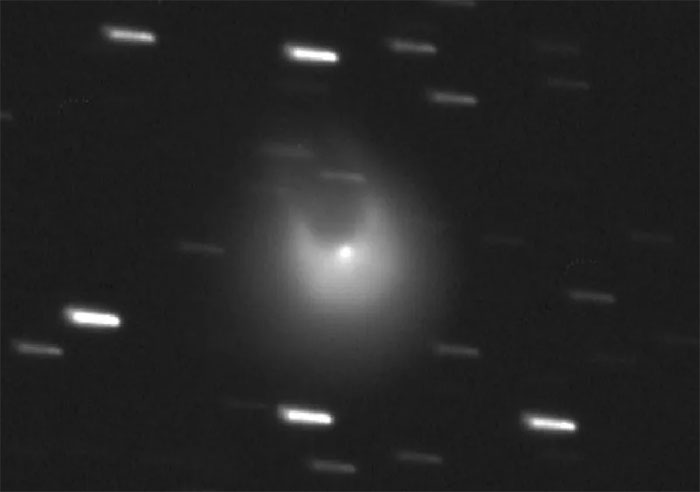A green object, glowing and shaped like the head of a horned demon, may explode in the sky above Earth.
According to Live Science, some experts predict that a “volcanic ice comet” could explode in the sky on April 8. This comet, known as 12P/Pons-Brooks, is the size of a city and is getting closer to Earth on its trajectory.

The “demon comet” beginning to “grow horns” as it nears Earth – (Photo: Eliot Herman).
12P/Pons-Brooks has been of interest for a long time. It not only emits an eerie green light but is also frequently captured in images resembling… the head of a demon.
This glowing demon head is formed by the comet’s coma, which sublimates as it approaches the Sun.

A black and white image clearly showing the comet has fully grown its two odd horns – (Photo: Eliot Herman).
Unlike other types of comets, “volcanic” comets like 12P/Pons-Brooks experience heating of their nucleus as they near the Sun, leading to pressure build-up and intense eruptions, causing the coma to sometimes brighten dramatically.
Moreover, a humorous arrangement of nature has directed the eruption jets of the comet so that each time it erupts, two horns appear on the bright coma.
With predictions of another possible explosion occurring on April 8, there will be two interesting aspects.
- First, this is when the object nicknamed the “demon comet” will be very close to Earth, making the explosion visible to the naked eye.
- Second, it is also the day when several locations around the world – including the United States – will witness a total solar eclipse.
Therefore, April 8 will be a very exciting day for astrophotographers, especially if the explosion occurs just before the total phase, providing them with a “once-in-a-millennium” moment when the comet has the chance to shine during the day, in the darkness of the eclipse.
Unfortunately, Vietnam is not on the path of the eclipse, but we still have the chance to see the “demon comet” with the naked eye at night, as it will maintain its demon head shape and unusual brightness for quite some time after the explosion.


















































